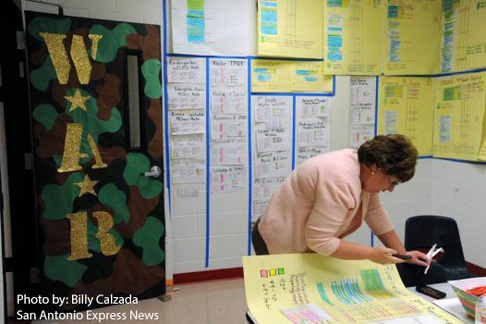FIVE QUESTIONS TO ASK
Creating a meaningful data room can be daunting at times. We all know how important it is to use data when making instructional decisions. But what data and how much should we use?
I have seen data rooms with wall to wall data and I have also seen data rooms with minimal data on display. They both work. There are many factors to take into consideration when deciding to create an instructional data room.
Questions you may ask yourself are:
- Why do we need a data / planning room?
- How much data is too much data?
- What data do I really need?
- How do I get staff members to not be afraid of using data?
- How do I create a welcoming environment?
Data driven decision making is an intricate part of instructional planning. Yet, too often we only give it lip service. If it is so powerful and can turn around a struggling campus then why are we not maximizing the use of such an amazing room?
Finding the data that is relevant to your campus needs takes time. Quantitative data or hard data is important. Quantitative data are test scores, teacher student ratio, discipline records, attendance records, graduation rates, dropout rates, and other such information. This data helps the staff see strengths and weaknesses. But it doesn’t always tell you what strengths or weaknesses exist. That is where qualitative data or soft data helps. Student, teacher, community surveys, campus culture, campus climate, perceptions and other data along these lines can help the staff understand causal factors.
It is easy to touch and understand quantitative data. Therefore, as educators we are more than willing to post and display hard data in our planning rooms. It is not our opinion or perception it is the raw data and everyone knows “data does not lie.” But does it? What if the hard data shows student Y is struggling in reading? Do we create a reading program and an intense intervention plan? When we meet with him/her and his/her parents we may learn that he/she can read. We may find that he/she is not motivated to take “YOUR TEST.” In student Y’s words he/she has nothing to prove to you. That is soft data.
The soft data can fill in the missing pieces. With this information we know we do not need to create a reading program for student Y. Now we must ask how can we motivate him/her or how can we help make taking assessments relevant.
Did the data lie or did we misinterpret because of limited information?
Creating a data room with relevant information is the first step to having a successful data room.
What’s in your instructional planning room?
Want to learn more about instructional planning rooms click here

